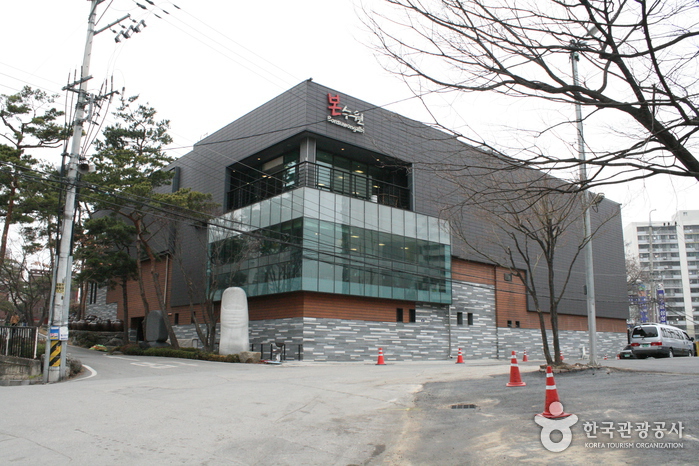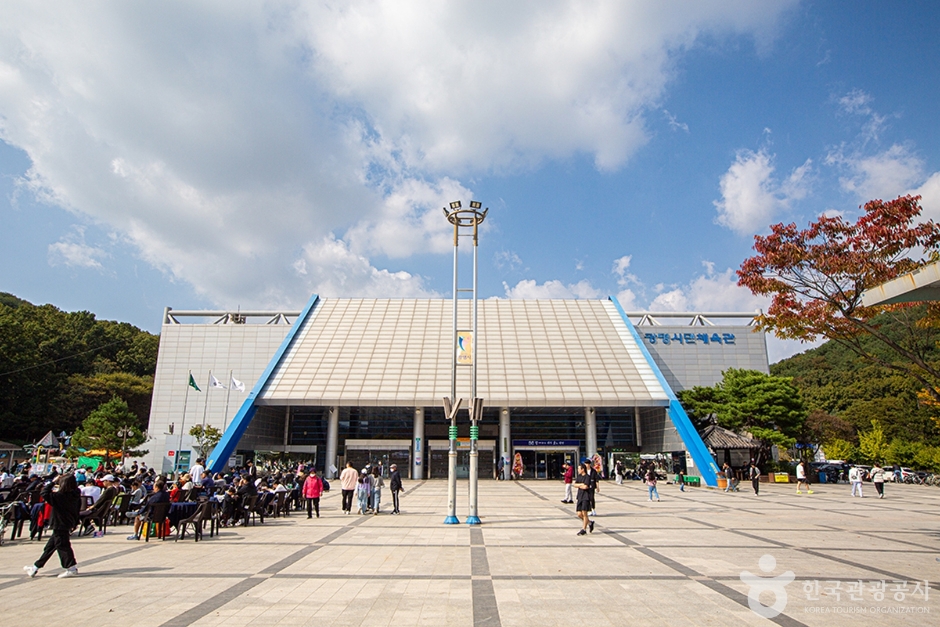Olive Young - Suwon Kyonggi University Branch [Tax Refund Shop] (올리브영 수원경기대점)
17.0Km 2024-06-27
34, Daehak-ro, Yeongtong-gu, Suwon-si, Gyeonggi-do
-
Leenakyeong Songtan Budaejjigae (이나경송탄부대찌개)
17.1Km 2024-02-06
47 Hyowon-ro 307beon-gil, Paldal-gu, Suwon-si, Gyeonggi-do
Leenakyeong Songtan Budaejjigae specializes exclusively in its signature dish, a Special budae jjigae (special sausage jjigae). The jjigae is generously filled with smoked sausages, ham, assorted sausages, and minced meat, arranged around the hot pot's edge. Boasting an ox bone broth base, the jjigae offers a spicy yet refreshing and savory taste. Complementing the main dish are side dishes like kimchi and bean sprout salad. The restaurant serves diners in portions designed for two or more.
Bonsuwon Galbi (본수원갈비)
17.1Km 2024-12-02
41, Jungbu-daero 223beon-gil, Paldal-gu, Suwon-si, Gyeonggi-do
+82-31-211-8434
With over 50 years of history, Bonsuwon Galbi is said to be one of Suwon's top three galbi restaurants. Diners can choose between saeng-galbi (grilled, unmarinated galbi) to savor the natural flavor of the meat, or yangnyeom-galbi (grilled, marinated galbi) for a richer, more savory taste.
Gyeonggido Dance Company’s Saturday Show: Dancing Cultural Heritage(경기도무용단 토요상설공연: 문화유산을 춤추다)
17.1Km 2025-06-11
경기도 수원시 팔달구 효원로307번길 20 (인계동)
Gwangmyeong Indoor Gymnasium (광명시민체육관)
17.2Km 2024-02-20
703 Ori-ro, Gwangmyeong-si, Gyeonggi-do
Gwangmyeong Indoor Gymnasium is a stadium equipped with seating for 3,000 spectators. It houses facilities for physical training, including golf, fitness, and table tennis. The spacious and vibrant lawn plaza immediately draws attention. This complex includes an open art hall for performances, sports facilities like an inline bicycle track and basketball courts, and amenities such as a children's playground and an outdoor water play area. Additionally, it features a 16-meter-high artificial rock-climbing wall.
ER Newcore Outlets - Gwangmyeong Branch [Tax Refund Shop] (ER 뉴코아아울렛 광명)
17.2Km 2024-04-18
8, Haan-ro 287beon-gil, Gwangmyeong-si, Gyeonggi-do
-
Elle - Newcore Gwangmyung Branch [Tax Refund Shop] (엘르 뉴코아 광명점)
17.2Km 2024-06-27
8, Haan-ro 287beon-gil, Gwangmyeong-si, Gyeonggi-do
-
ANYBODY - Newcore Gwangmyung Branch [Tax Refund Shop] (애니바디 뉴코아 광명점)
17.2Km 2024-06-26
8, Haan-ro 287beon-gil, Gwangmyeong-si, Gyeonggi-do
-
Pro - Newcore Gwangmyung Branch [Tax Refund Shop] (프로스펙스 뉴코아 광명점)
17.2Km 2024-06-27
8, Haan-ro 287beon-gil, Gwangmyeong-si, Gyeonggi-do
-
Polham - Newcore Gwangmyung Branch [Tax Refund Shop] (폴햄 뉴코아 광명점)
17.2Km 2024-06-27
8, Haan-ro 287beon-gil, Gwangmyeong-si, Gyeonggi-do
-



![ER Newcore Outlets - Gwangmyeong Branch [Tax Refund Shop] (ER 뉴코아아울렛 광명)](http://tong.visitkorea.or.kr/cms/resource/71/2888771_image2_1.jpg)
![Elle - Newcore Gwangmyung Branch [Tax Refund Shop] (엘르 뉴코아 광명점)](http://tong.visitkorea.or.kr/cms/resource/58/3314158_image2_1.jpg)
![ANYBODY - Newcore Gwangmyung Branch [Tax Refund Shop] (애니바디 뉴코아 광명점)](http://tong.visitkorea.or.kr/cms/resource/64/3312964_image2_1.jpg)
![Pro - Newcore Gwangmyung Branch [Tax Refund Shop] (프로스펙스 뉴코아 광명점)](http://tong.visitkorea.or.kr/cms/resource/40/3313540_image2_1.jpg)
![Polham - Newcore Gwangmyung Branch [Tax Refund Shop] (폴햄 뉴코아 광명점)](http://tong.visitkorea.or.kr/cms/resource/41/3313641_image2_1.jpg)
 English
English
 한국어
한국어 日本語
日本語 中文(简体)
中文(简体) Deutsch
Deutsch Français
Français Español
Español Русский
Русский